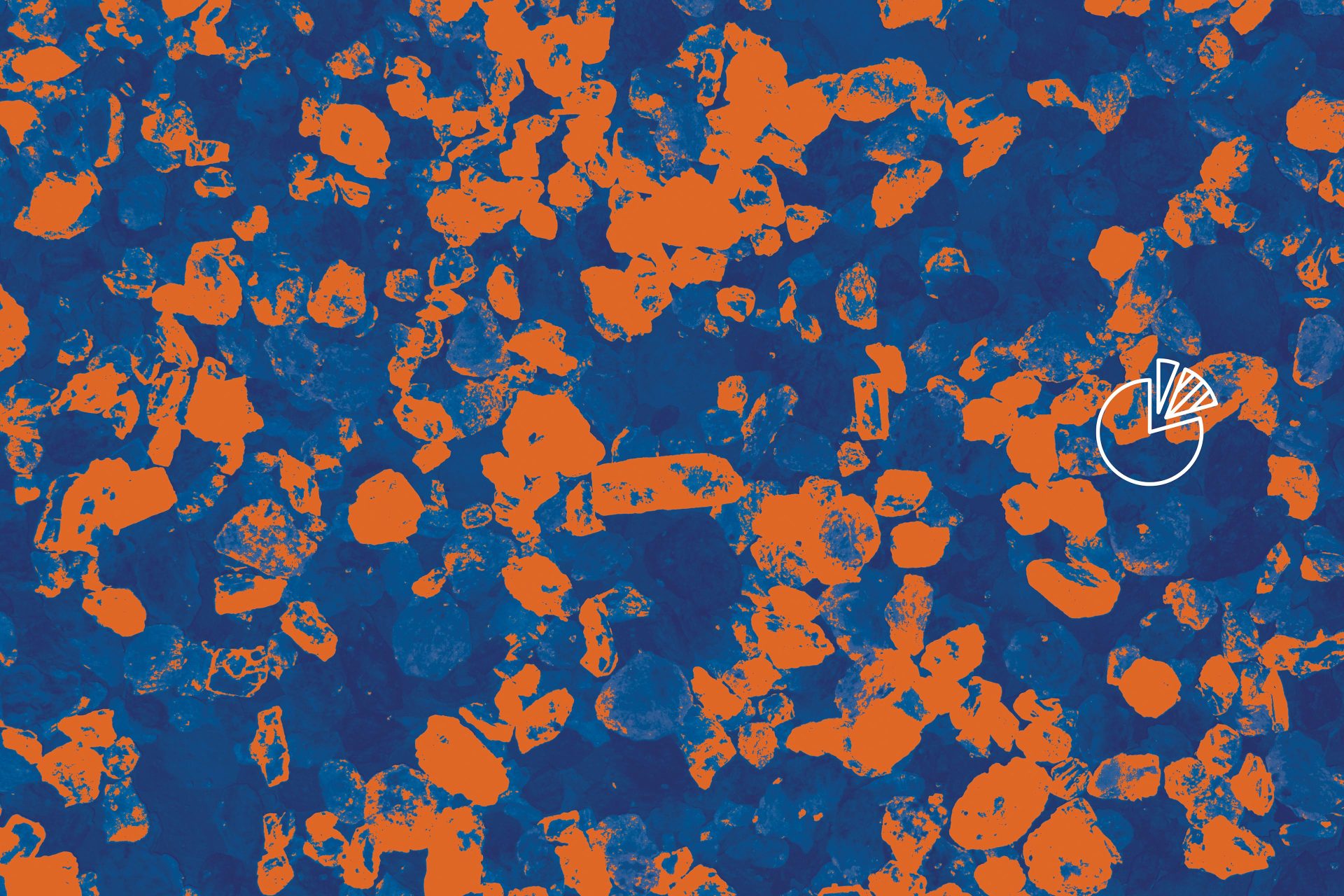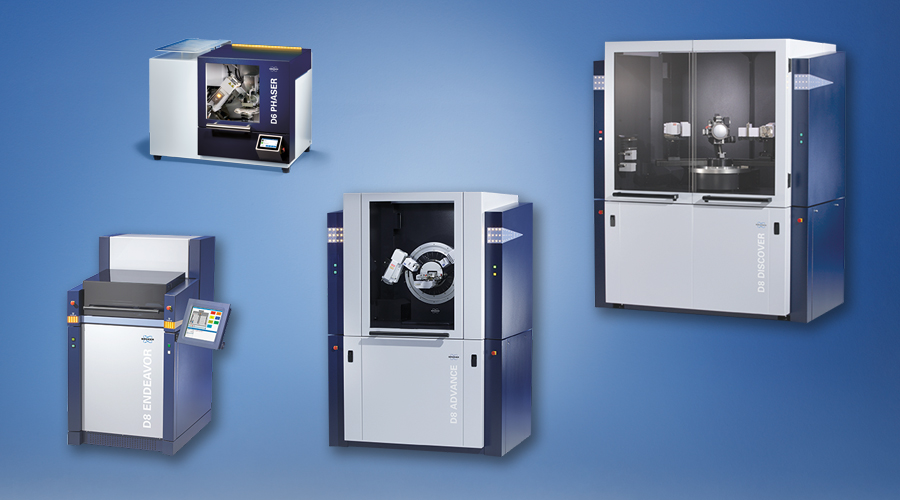

DIFFRAC.DQUANT
Quantitative Phase Analysis
Routine Applications and Process Control
Quantitative Analysis from Calibration to Reporting
The new DQUANT is the ideal tool for both, experienced lab managers and operators running the daily jobs. The software comes with predefined work-flows to set up the following analytical methods:
- Calibration with reference materials
- Drift correction
- Modules and logical sequences
- Addition method
- Absorption method for filter sample holders (NIOSH 7500)
- Ratio method
- Partial Least Squares Regression (PLSR) (new in V2)
Whereas the calibration is always defined interactively, unknown samples may either be evaluated in a simplified graphical user interface, or fully automated in the console mode after the measurement has finished.
User Guided Calibration
DQUANT combines an intuitive graphical user interface with work-flow guidance. Pre-configured walk-down data trees are implemented for the different analytical tasks.
The calibration curves and the intensity-drift correction are established and verified in the user interface. The experienced user may also analyze unknown samples interactively.
Concentration-modules allow for tailor-made reporting of results derived from the calibrated concentrations.
Maximum analytical flexibility is achieved by using intensity-modules. The built-in formula editor allows for easy column arithmetic of intensities. This gives access to any kind of user defined intensity corrections, peak overlap correction or simply averaging intensities in order to reduce preferred orientation effects.
Operator Friendly Evaluation
DQUANT allows for a fully automated data evaluation without user interaction. For those users who do not wish to run their quantitative analysis in full black-box mode, a simplified user interface is provided. It allows the operator to load a verified calibration and to analyze batches of unknown samples.
For the evaluation of unknown samples there is no need to modify a calibration. Instead, results are generated for a whole series of samples in one run and presented in the layout, which is defined in the calibration project file.
Several table layouts for the results presentation are provided.
They contain different levels of information. The results preview allows further customization, export to spreadsheet calculation programs, printing or export to document formats such as PDF or XPS.
Automated Measure.Evaluate.Report
DQUANT employs the full power of the DIFFRAC.MEASUREMENT package to simplify quantitative analysis. Measurement jobs link the scan and evaluation conditions to the sample IDs of the unknown samples, standards or drift monitor samples.
The data evaluation in DQUANT and the results presentation may either be triggered automatically or performed by the operator manually. This whole procedure becomes particularly easy since it is literally as simple as pushing a button.
Version 2 exports extended properties to the instrument database for advanced reporting in the DIFFRAC.SUITE RESULTS MANAGER. This includes the visual inspection of the fit, the evaluation of numerous parameters of each phase, the calculation of modules, limit checks and the presentation of results in graphs and tables for multiple samples reporting.
In addition, scans queried in the RESULTS MANAGER can be passed directly to DIFFRAC.DQUANT for evaluation, making the RESULTS.MANAGER a central data hub.
DQUANT Advantages
- Accurate and precise through calibration against known reference materials
- No systematic errors caused by micro-absorption effects
- Simple to use with virtually no operator training required
- High flexibility of analytical methods via definition of modules and built-in formula
- Fast (no full scans are needed, just individual peaks)
- Supports high sample throughput (automation, sample changers, automated data evaluation)
- Direct combination with Ca XRF analyzer
- Delivers absolute (from μg to g) and relative concentrations (wt-%)
- PLSR makes it possible to calibrate properties that do not have an obvious relationship with the intensity of a particular phase, such as the Degree of Carbonation of a cement
DIFFRAC.DQUANT Specifications
| Version | The current version of the software is DIFFRAC.DQUANT V2.0 |
Analytical methods |
|
| Intensity models |
|
Compliance |
cGxP/21CFR Part 11 |
DIFFRAC.DQUANT Resources
Application Reports & Flyers & Product Sheets & White Papers
- DIFFRAC.DQUANT: Norm compliant quantification of retained austenite
- DIFFRAC.DQUANT: Control of free lime content in clinker
- DIFFRAC.DQUANT: Quartz determination with the Addition Method
- DIFFRAC.DQUANT V2: Simplifying Advanced Quantitative Phase Analysis for Crystalline and Amorphous
- DIFFRAC.SUITE PART11 - The Solution for your Compliant Lab
- D6 PHASER – Benchtop XRD for Monitoring Silica Dust Exposure
Keep your DIFFRAC.DQUANT up to date
Free Maintenance Update
The free DIFFRAC.DQUANT Maintenance Update renews your DQUANT version to the most recent release. Regardless of your DQUANT license level, you can always download the latest Maintenance Update from www.brukersupport.com, free of charge!
Download process
- Register at Bruker Customer Support
- Click on the "Software" button
- Search for the DIFFRAC.DQUANT Maintenance Update
- Download the update
Bugfixes
By keeping your DIFFRAC.DQUANT up to date, you will benefit from all bugfixes made for the current but also all previously released versions, regardless of the license level. DIFFRAC.DQUANT Maintenance Updates are cumulative and can therefore be applied to any previous version.
What are Upgrades?
DIFFRAC.DQUANT Maintenance Updates do not come with new features. If you want to benefit from features introduced in new major releases you need to purchase the latest DIFFRAC.DQUANT upgrade.

